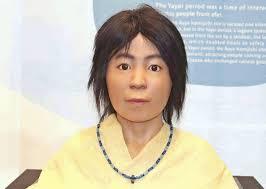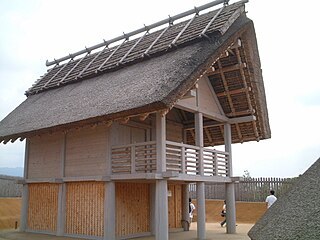Your gateway to endless inspiration
Neolithic - Blog Posts





Sean bienvenidos amantes del mundo japonés a una nueva publicación, en este caso voy a dar mi opinión sobre uno de los hallazgos que se han hecho en el país del sol naciente y que tiene que ver con el rostro del niño reconstruido y de cómo la genética se aplica a la arqueología espero que os guste.
-
Antes que nada, el periodo yayoi abarca las siguientes fechas, 300a. C 300 d.C estas fechas son las tradicionales, aunque hay estudios más recientes del siglo IX antes de Cristo desde la península de Kyūshū, pero bueno, eso serán otras publicaciones que realizaré sobre el tema, pero en este caso nos vamos a centrar en este hallazgo este hombre se llama Aoya kamijiro.
-
Fue creado en octubre de 2021, ya que 1998 se encontraron unos restos arqueológicos de más de cien huesos humanos por lo cual es una tarea complicada, pero que nos permite reconstruir las facciones y no solo de la gente prehistórica, sino también de la propia historia como del mundo antiguo y de muchas épocas históricas.
-
Esto se obtiene a raíz de los huesos de los que se pueden extraer pequeñas muestras que son las que nos permitirán, saber si el individuo en cuestión era masculino era femenino y si padecía patologías.
-
Las nuevas tecnologías nos permitirán reconstruir fiel miente de alguna forma u otra el rostro, a la cual parece, ya que esto es un avance muy notable, tanto en la genética como en la arqueología porque podemos reconstruir bastante bien a la gente del pasado no sobre toda la población, que suele estar olvida en un segundo plano.
-
Espero que os haya gustado que pasen una buena semana.
-
日本を愛する皆さん、新しい出版物へようこそ。今回は、日出ずる国で行われた、復元された子供の顔と遺伝学に関係する発見の 1 つについて、私の意見を述べたいと思います。考古学にも応用できると思います。
-
まず、弥生時代は以下の300aの年代になります。 西暦 300 年頃 これらの日付は伝統的なものですが、九州半島からは紀元前 9 世紀に関するより最近の研究もありますが、それはまた別の出版物でこのテーマについて行う予定ですが、この場合は次のようにします。この発見に焦点を当ててください この男の名前は青谷神代です。
-
1998年に100体以上の人骨の考古学的遺跡が発見されて以来、この計画は2021年10月に作成された。そのため複雑な作業ではあるが、先史時代の人々の派閥だけでなく、古代世界や歴史上のさまざまな時代からの歴史そのものです。
-
これは骨から得られるもので、少量のサンプルを抽出することで、問題の人物が男性か女性か、また病状を患っていたかどうかを知ることができます。
-
新しいテクノロジーにより、何らかの方法で、その顔に見える顔を忠実に復元できるようになります。これは、遺伝学と考古学の両方において非常に注目に値する進歩です。なぜなら、私たちは過去の人々についてではなく、非常によく復元できるからです。国民全体が、通常は背景に隠れて忘れ去られています。
-
気に入っていただければ幸いです。良い一週間をお過ごしください。
-
Welcome lovers of the Japanese world to a new publication, in this case I am going to give my opinion on one of the discoveries that have been made in the country of the rising sun and that has to do with the reconstructed child's face and how genetics It applies to archeology. I hope you like it.
-
First of all, the yayoi period covers the following dates, 300a. C 300 AD These dates are the traditional ones, although there are more recent studies from the 9th century BC from the Kyūshū peninsula, but well, that will be other publications that I will make on the subject, but in this case we are going to focus on this discovery This man's name is Aoya kamijiro.
-
It was created in October 2021, since archaeological remains of more than one hundred human bones were found in 1998, which is why it is a complicated task, but it allows us to reconstruct the factions and not only of the prehistoric people, but also of history itself. as from the ancient world and from many historical periods.
-
This is obtained from the bones from which small samples can be extracted that will allow us to know if the individual in question was male or female and if he suffered from pathologies.
-
New technologies will allow us to faithfully reconstruct the face, in some way or another, to which it appears, since this is a very notable advance, both in genetics and in archeology because we can reconstruct quite well the people of the past not about the entire population, which is usually forgotten in the background.
-
I hope you liked it and have a good week.






Sean bienvenidos, japonistasarqueológicos, a una nueva entrega de arqueología nipona, una vez dicho esto pónganse cómodos qué empezamos. - Nos volvemos a trasladar a la prehistoria japonesa que, cada día, nos sorprende con un nuevo hallazgo arqueológico. Las ruinas de Yoshinogari, datan del periodo Yayoi(III-IV) pero en este caso del Yayoi tardío y se localizan en la prefectura de Saga¿Cuándo llegó el arroz a japón? Y¿por dónde llegó? Hay dos teorías: una que llegó de china y la otra desde Corea hasta la isla de Kyushu a través del mar de Ariake. El enorme asentamiento está rodeado por tres fosos y es la raíz de los castillos en Japón, ha sido seleccionado como uno de los 100 castillos más famosos de Japón. - En el periodo Yayoi, se caracteriza porque es cuando aparecen las clases guerras y las clases dirigentes a raíz de la acumulación de poder, esto corresponde a los jefes locales, por ejemplo: La residencia de la clase dominante en el recinto interior sur, no confundir con realeza japonesa, hay que recordar que a los poblados se les instalaba un punto religioso, por aquella época predominaba el Sintoismo como: es el caso del santuario principal construido en el recinto interior norte. - El yacimiento cuenta con atalaya del recinto interior sur, de carácter defectivo, al sur se encuentra el pueblo con viviendas tipo foso y almacenes para guardar el arroz rojo que era el que se cultivaba en aquella época y en la ciudad de Karatsu, también en la prefectura de Saga, se encuentran las ruinas de Nabatake, las ruinas de cultivo de arroz más antiguas de Japón. - Durante el periodo Yayoi y Kofun tuvieron lugar una serie de migraciones desde la península de corea, esto trajo consigo que las poblaciones coreanas y japonesas de la zona se mezclaran generando mestizos, además de transmitir sus conocimientos de la agricultura. - Espero que os haya gustado y nos vemos en próximas publicaciones, que pasen una buena semana. Welcome, Japanese archaeologists, to a new instalment of Japanese archaeology, so make yourselves comfortable and let's get started. - We move back to Japanese prehistory, which surprises us every day with a new archaeological find. The ruins of Yoshinogari, dating from the Yayoi period (III-IV) but in this case from the late Yayoi period, are located in the prefecture of Saga When did rice arrive in Japan? And where did it arrive? There are two theories: one that it came from China and the other from Korea to the island of Kyushu via the Ariake Sea. The huge settlement is surrounded by three moats and is the root of castles in Japan, it has been selected as one of the 100 most famous castles in Japan. - The Yayoi period is characterised by the emergence of the warring and ruling classes as a result of the accumulation of power, this corresponds to the local chiefs, for example: The residence of the ruling class in the southern inner precinct, not to be confused with Japanese royalty, it should be remembered that the villages had a religious point installed, at that time Shintoism predominated, such as the main shrine built in the northern inner precinct. - The site has a watchtower in the southern inner enclosure, which is defective, to the south is the village with moat-like dwellings and warehouses for storing the red rice that was cultivated at the time, and in the town of Karatsu, also in Saga Prefecture, are the ruins of Nabatake, the oldest rice cultivation ruins in Japan. - During the Yayoi and Kofun period a series of migrations from the Korean peninsula took place, which resulted in the mixing of the Korean and Japanese populations in the area and the passing on of their knowledge of agriculture. - I hope you liked it and see you in future posts, have a good week.